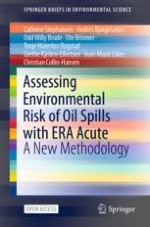This open access book introduces readers to a new methodology for assessing the risks to the marine environment following accidental oil spills. The methodology will soon be implemented on the Norwegian Continental Shelf and will be complemented by guidelines for its use in a regulatory framework.
The brief book is intended to provide international readers with a basic grasp of what the ERA Acute methodology consists of, what its applications are, and the underlying impact and restoration models used in its development. The content is divided into three main parts: an introduction and overview of risk management applications for generalists at the management level, a model overview for generalist scientists, and a more detailed final section for risk assessment professionals, which presents the results of the validation and sensitivity testing.
